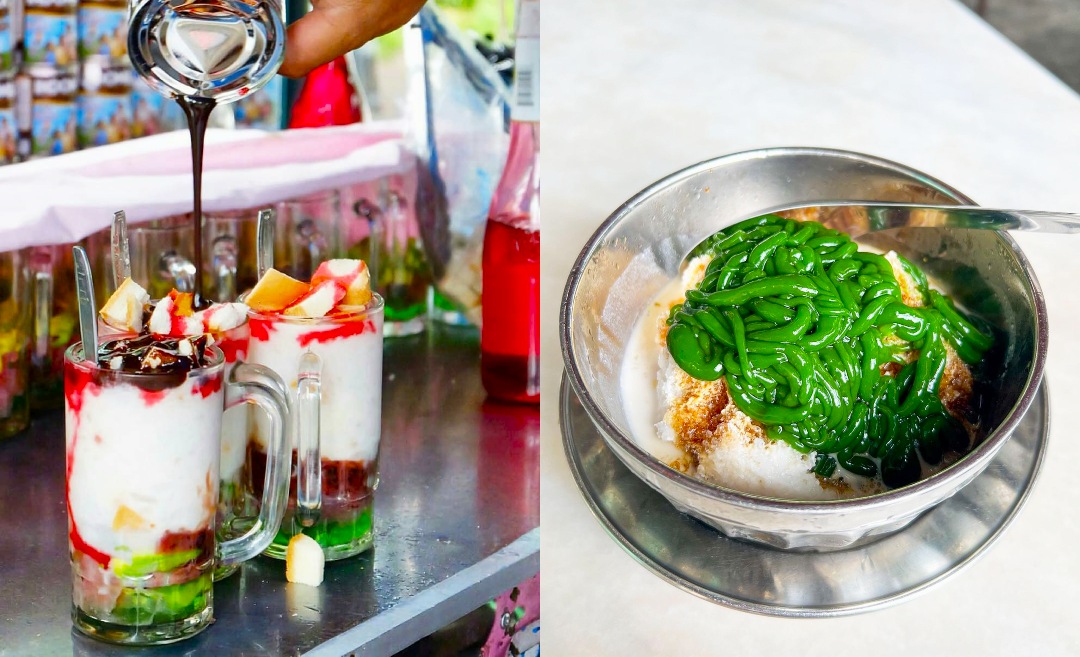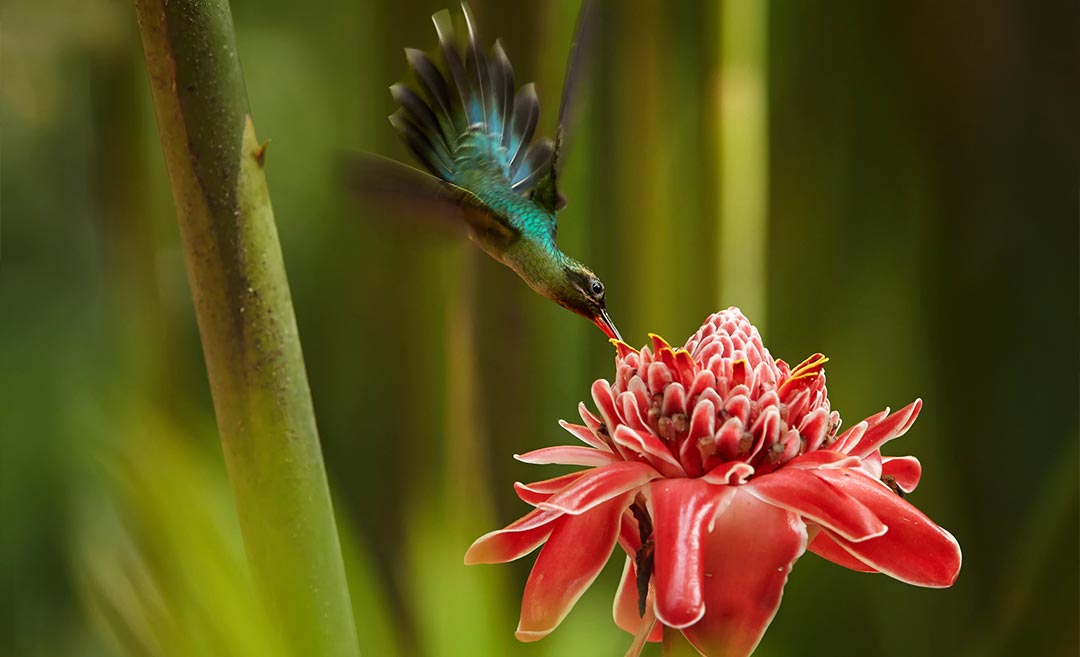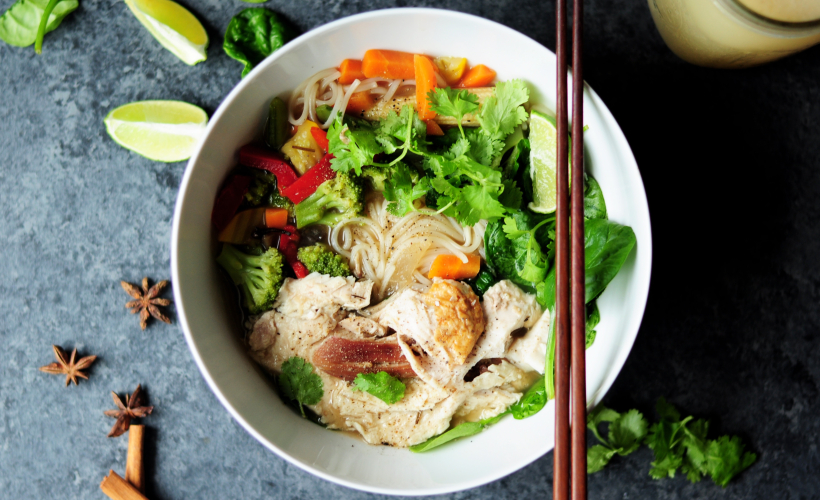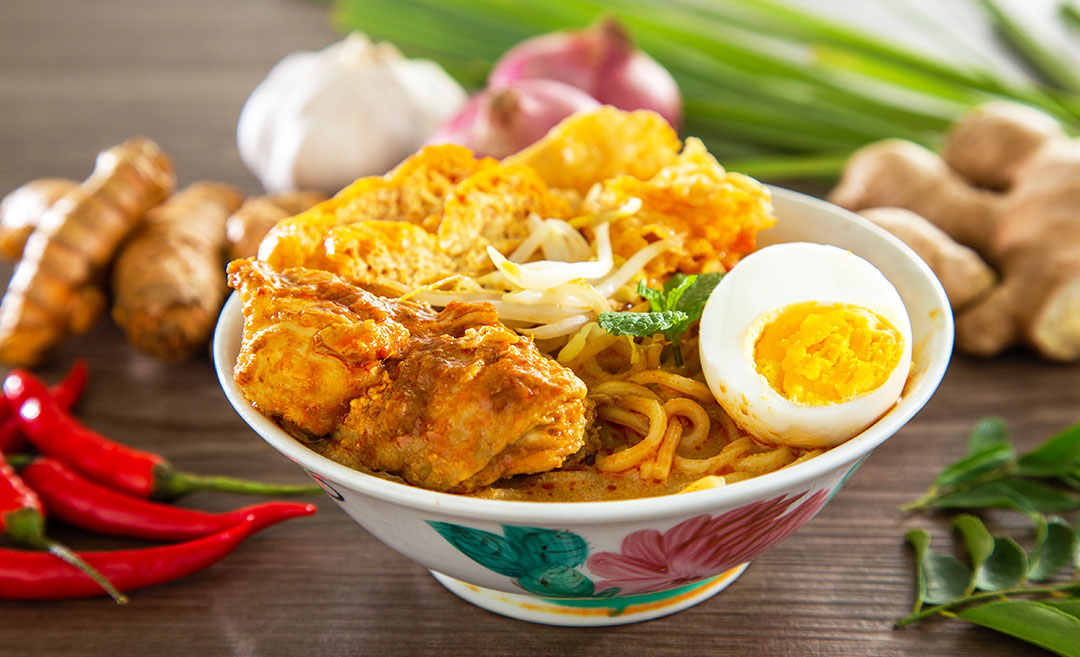With Southeast Asia’s year-round hot and humid climate, ice is always in high demand in the region. Before local manufacturers started making ice in the late 19th century, it had to be imported all the way from the US, making it an expensive commodity.
Since then, ice has become more affordable and easily accessible to just about everyone, paving the way for an avalanche of lip-smacking shaved ice desserts to sprout across the region.
ABC
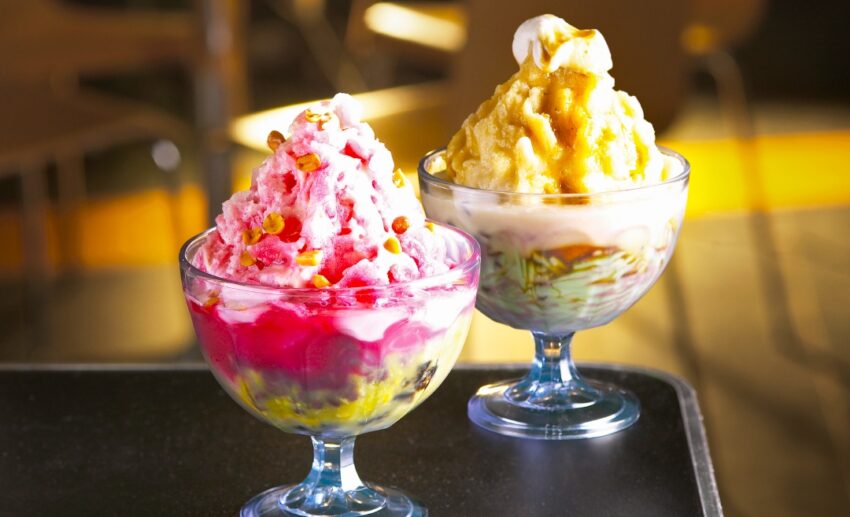
ABC or air batu campur (‘mixed ice’ in Malay) may be synonymous with Malaysia, but it is just as beloved in neighbouring Singapore and Brunei.
Originally, the dish simply consisted of shaved ice topped with red beans, which is why it is also known as ais kacang (bean ice). Over time, the ingredients evolved to include attap chee (nipah palm seeds), creamed sweet corn, roasted peanuts, and cubes of grass jelly and agar.
Palm sugar and red rose syrups (or, in some versions, Sarsi) are drizzled over the shaved ice for sweetness, and evaporated milk or coconut milk is added to lend creaminess.
ABC goes back to a pre-World War I era when street vendors used blades to shave blocks of ice. In time, hand-cranked ice-shaving machines replaced this, although, in modern times, they are more likely to be motorised.
There was also a topping-free version that was popular in the 1950s and 60s. Called ais kepal, this variation, where shaved ice is pressed into a fist-sized ball and drenched with colourful syrups, is rare nowadays outside of heritage areas in Penang and Melaka.
Es campur
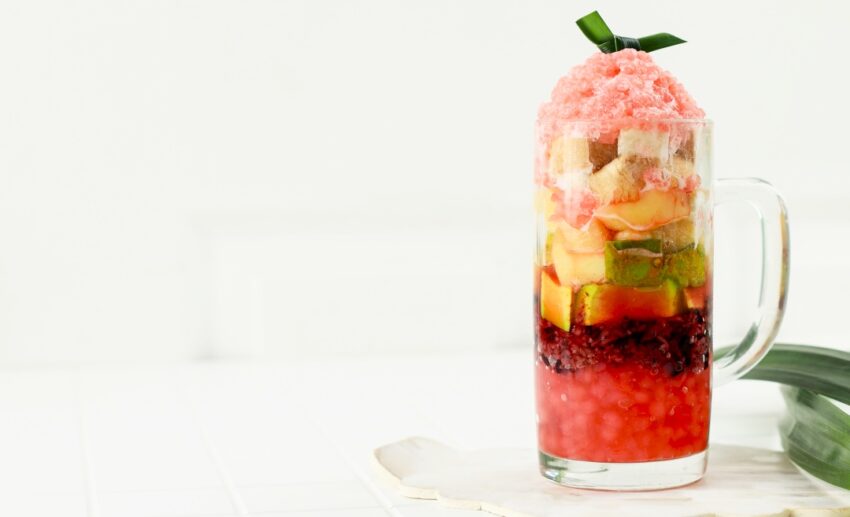
In Indonesia, es campur refers to shaved ice desserts in general, with the ingredients varying according to locality. In Java’s highland city of Bandung, the local speciality is es doger, a syrupy, pink-hued iced drink with a coconut milk base, with black glutinous rice and fermented cassava as its main ingredients.
Over in Kalimantan, the city of Pontianak – whose founding involved vampire-like ghosts – also boasts a bright pink shaved ice dish. In this case, es nona is made with red beans and agar.
Another popular treat in Indonesia is es teler. This blend of condensed milk and pandan syrup with slices of avocado, coconut, and jackfruit was created by husband-wife duo Tukiman and Samijem Darmowiyono in a village in Central Java.
Es campur can be found anywhere, from street vendors to high-end restaurants. Although it is popular throughout the year, it is particularly favoured by Indonesians at iftar – the breaking of fast during the holy month of Ramadan.
Halo-halo
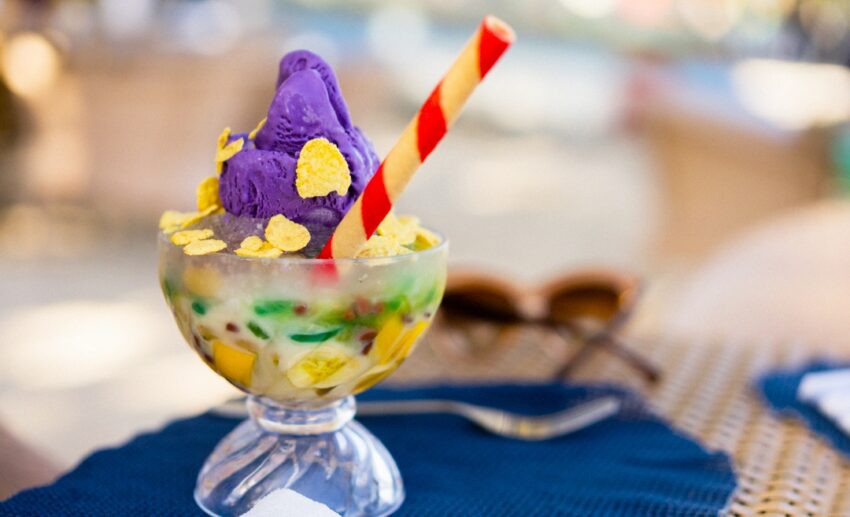
Literally ‘mix-mix’ in Tagalog, halo-halo features ingredients like palm seeds, plantains cooked in syrup, jackfruit, tapioca pearls, nata de coco, sweetened beans, soft coconut flesh, and colourful jellies layered with shaved ice.
The dessert is then topped with items like leche flan, mashed ube (purple yam), ube ice cream and crispy pinipig (sweet glutinous rice flakes) and crowned with a drizzle of evaporated milk.
The origins of halo-halo are often attributed to Japan’s popular shaved ice dessert, kakigori, introduced to the Philippines by pre-war Japanese migrants. Instead of the azuki beans used in kakigori, halo-halo features local mung beans cooked in syrup and served on crushed ice with milk.
Over the years, more local ingredients were added as Filipinos adapted the dessert to suit their palate, including the quintessential ube that gives halo-halo its distinctive purple shade. The result? The unofficial national dessert of the Philippines and one of the best ways to beat the heat in Asia.
Namkhaeng sai
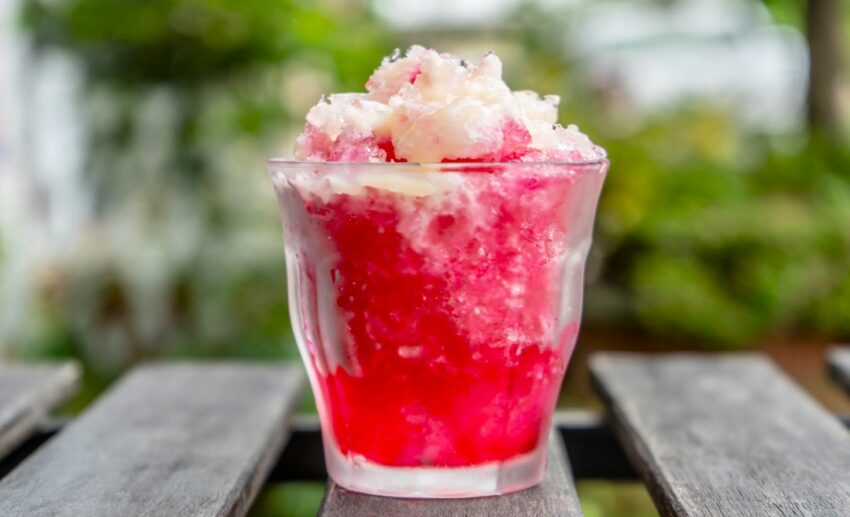
Namkhaeng sai simply means ‘shaved ice’ in Thai. Its basic construction is a varied mix of ingredients under crushed ice, drenched in colourful syrups and creamy coconut milk.
A typical namkhaeng sai stall offers a bewildering array of toppings customers can choose from, from an array of candied fruits and taro, grains or jellies, to bread and crackers, so it’s possible to have an endless combination of ingredients.
An early version of this icy treat was chamba. Believed to have been brought over from China to Phetchaburi province, it combined shaved ice with leftover patongko (Chinese crullers). It was dressed with red syrup – all the rage in Thailand in the 1950s – and when condensed milk became popular, that was added as well.
Namkhaeng sai shares some common ingredients with other icy Thai desserts like thapthim krop, sarim, lot chong and o-aew. For instance, the syrup-soaked water chestnuts boiled in tapioca flour and sliced jackfruit – two ingredients that make up thapthim krop – are also favourite toppings for namkhaeng sai.
Che ba mau
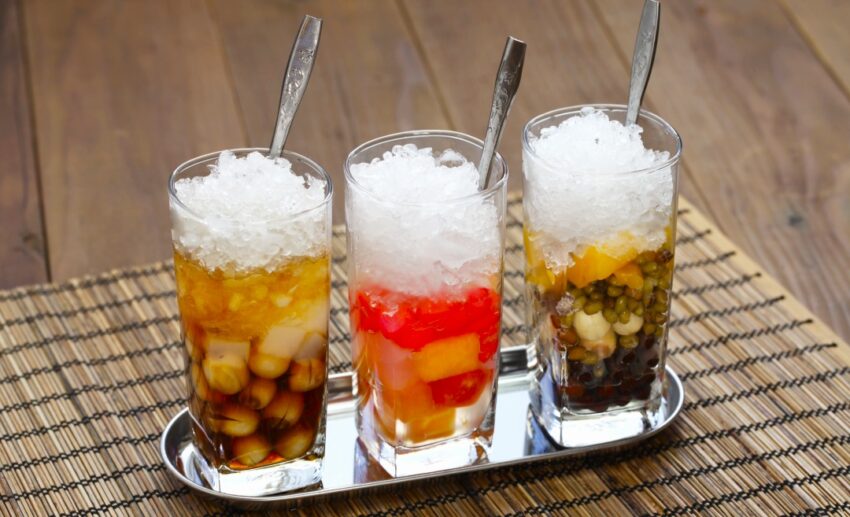
The term ‘che’ refers to any traditional Vietnamese dessert, whether it’s a beverage, pudding, or even stew. Street stalls and eateries across Vietnam sell a startlingly wide variety of che, often made with various ingredients like beans, jellies, and local fruit.
One popular type of che is called che ba mau or ‘three-colour dessert’ – a reference to the three vibrant hues of this layered shaved ice speciality. Unlike the ‘anything goes’ approach of many other ice treats, che ba mau is assembled using a set list of five ingredients.
Sweetened azuki or kidney beans make up the red layer, while yellow comes from sweetened mung bean paste, and pandan-flavoured jelly adds bright green. These layers are topped off with a silky coconut sauce – made by mixing coconut cream and sugar with starch – and crushed ice.
Che ba mau can be eaten as an after-meal dessert at cafes and restaurants or roadside stalls. Due to its relatively short ingredient list, many Vietnamese also whip up this classic dessert at home.
Cendol
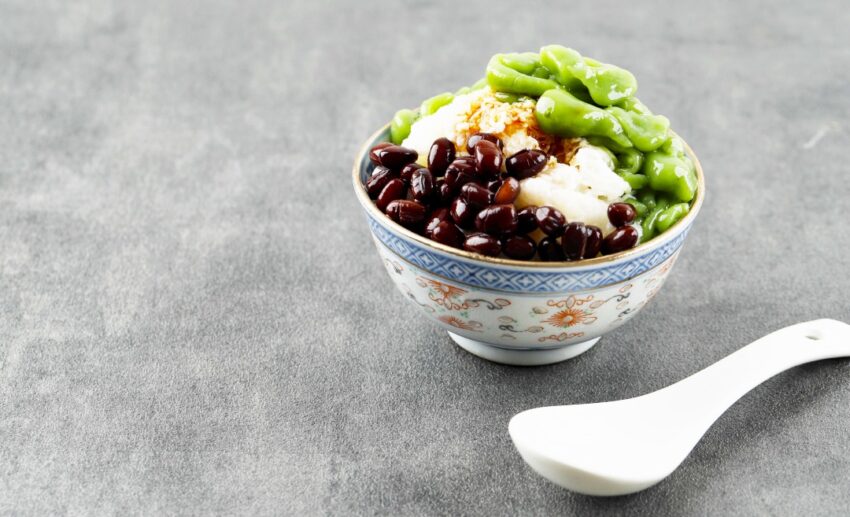
This sweet treat is aptly named after its primary ingredient – the green, worm-like jelly made with rice flour, sometimes mixed with tapioca starch. It is traditionally made with shaved ice, palm sugar syrup, and coconut milk. Sometimes, other ingredients like red beans, rose syrup, or even fresh durian are added as well.
This iteration of cendol is a local speciality in Indonesia, Malaysia, Brunei, and Singapore. But the wriggly green jelly is also featured in local desserts elsewhere in Southeast Asia, just under a different name.
The first written mention of the noodle-like jelly is as dawet in Javanese, as far back as the 12th century. In Indonesia, it is sometimes still called dawet to this day.
This story by Jacie Tan Cheng Hwee was originally published on AirAsia. Zafigo republished this story in full with permission from the publisher, simply because good stories should be read by as many people as possible! If you have stories that will be of interest and useful to women travellers, especially in Asia, please get in touch with us at info@zafigo.com.

